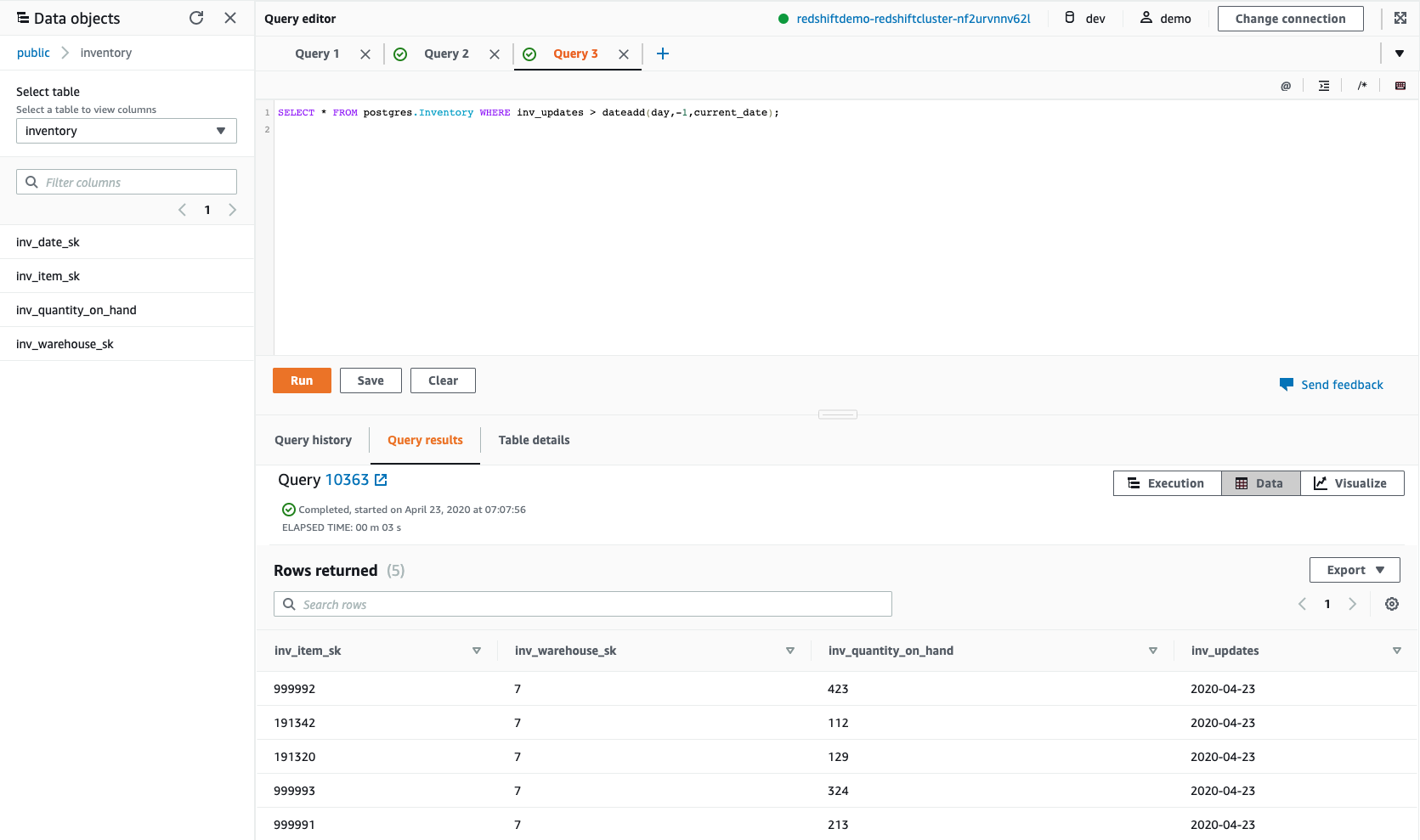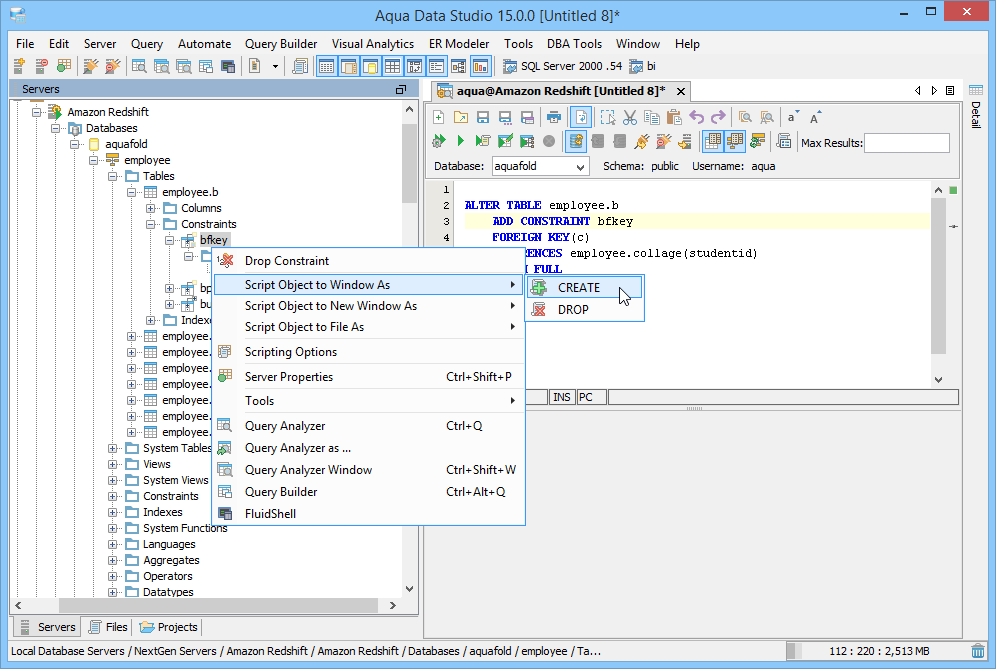
- Redshift dateadd how to#
- Redshift dateadd password#
Querying without parameters is pretty straightforward, just copy your query from Redash and enter it in the query editor. In this section, we walk you through different ways to migrate your Redash queries to the Amazon Redshift Query Editor V2. Migrate Redash queries to Amazon Redshift Query Editor V2 For more information, refer to Sharing a query.
Add the principal tag sqlworkbench-team to the IAM role to share queries. Create a trust relationship between your IdP and AWS. For more information, refer to Configuring your AWS account. Create an IAM role for accessing Query Editor V2 in an AWS account and attach the required IAM policies based on your use case. Create an Amazon Redshift database group with read-only access. To set up the query editor, complete the following steps: Federate single sign-on access to Amazon Redshift query editor v2 with Okta. Federate access to Amazon Redshift query editor V2 with Active Directory Federation Services. You can find more information in the following posts: To implement this solution, you must set up federated access to the Amazon Redshift Query Editor V2 using your identity provider (IdP) services. In the following sections, we will walk you through the steps to set up the query editor and migrate Redash queries. The following diagram illustrates our architecture. For more details, refer to Sharing data across clusters in Amazon Redshift. However, we set up Amazon Redshift data sharing to access the Amazon Redshift cluster from other AWS accounts. The Query Editor V2 currently doesn’t support cross-account Amazon Redshift connections. The federated user gets assigned to a database group with limited access. The user can only access the Query Editor V2 service. To restrict user access to other AWS services within our AWS account, we attached the AWS Identity and Access Management (IAM) policies (see the appendix at the end of this post) to the SAML IAM role. However, it presented the following challenges: You can run multiple queries in parallel by running each query in a separate tab. You can use notebooks to organize, annotate, and share multiple SQL queries in a single document.  You can turn on the Chart feature to display a graphic visualization of the current page of results. You can write parameterized SQL queries, which allows you to reuse a query with different values. You can keep track of changes made to saved queries using the Query History feature. You can benefit from new features as soon as they get released by the Amazon Redshift Query Editor team. It enables you to collaborate with team members by providing the ability to share saved queries securely.
You can turn on the Chart feature to display a graphic visualization of the current page of results. You can write parameterized SQL queries, which allows you to reuse a query with different values. You can keep track of changes made to saved queries using the Query History feature. You can benefit from new features as soon as they get released by the Amazon Redshift Query Editor team. It enables you to collaborate with team members by providing the ability to share saved queries securely. Redshift dateadd password#
Users can connect to Amazon Redshift using federated access without providing a user name and password. Users can log in to the Query Editor using single sign-on (SSO). It provides a managed service that allows you to focus on exploring your data without managing your infrastructure. It makes data across analytics and data scientists more accessible with a unified web-based analyst workbench for data analysts to explore, share, and collaborate on data through a SQL interface. The Amazon Redshift Query Editor V2 has the following benefits: Share a query with other users as a URLĪfter an evaluation of alternate services, we chose the Amazon Redshift Query Editor V2. Write a dynamic SQL query and run the query based on input parameters. 
Run SQL queries on the selected database.Allow list users using permission groups (POSIX/LDAP) for accessing the tool.Provide data access without creating a database user and password.


We had the following requirements in mind when looking for an alternative tool: Over time, we began to notice incompatibilities between Redash’s operations and the needs of our workload. Redash is a web-based SQL client application that can be used to author and run queries, visualize query results with charts, and collaborate with teams. BackgroundĪt AWS Payments, we had been using Redash to allow our users to author and run SQL queries against our Amazon Redshift data warehouse.
Redshift dateadd how to#
In this post, we discuss how to democratize data access to Amazon Redshift using the Amazon Redshift Query Editor V2. The Machine Learning, Data and Analytics (MLDA) team at AWS Payments enables data-driven decision-making across payments processes and partners by delivering data, business insights, and causal and ML inferences through a scalable set of data, insights, and ML inference services. It helps AWS customers manage their payment methods and payment preferences, and helps customers make self-service payments to AWS. AWS Payments is part of the AWS Commerce Platform (CP) organization that owns the customer experience of paying AWS invoices.








 0 kommentar(er)
0 kommentar(er)
